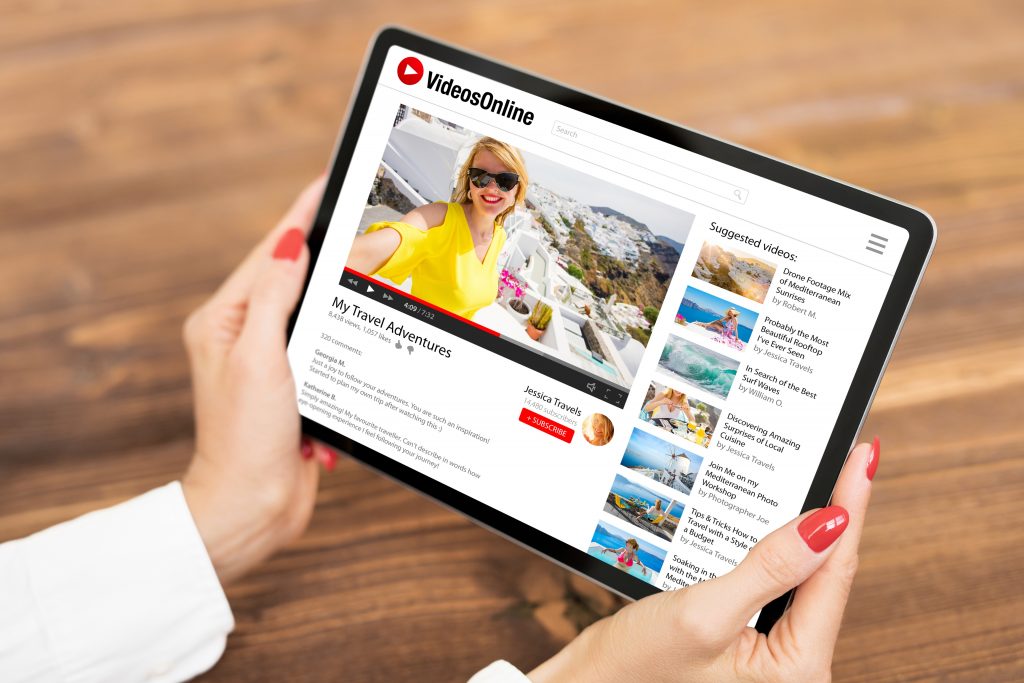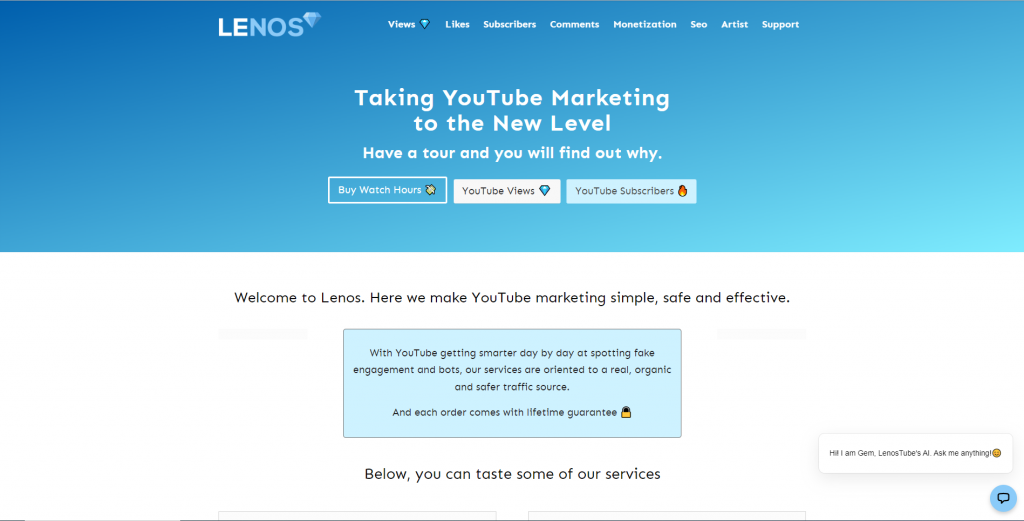
In this age of videos, how well do you think YouTube ads could help get the word out about your business? Every day, more than 2 billion people use YouTube. This means that you can reach your ideal customers from anywhere in the world. But you need a plan if you want your YouTube ads to get seen. Would you like to use YouTube ads to take your brand to a whole new level?
How we watch videos on YouTube has changed a lot, and the ads on the site have made it a useful business tool. YouTube is one of the best ways to connect with your audience and get them to buy because it has so many users and so many marketing choices. But posting an ad and hoping for the best won’t get you the results you want. If you want to really reach people with YouTube advertisements, you must be aware of the primary methods and approaches that make campaigns successful.
Our essay will discuss the effectiveness of YouTube advertising and provide you helpful advice on creating winning campaigns. We will walk you through the steps you need to take to make your YouTube advertising as successful as possible, from knowing your audience and having clear goals to making ads that people want to click on and making sure your targeting is perfect. Get ready for ads on YouTube that will make your business grow like never before.
What is YouTube Advertising?
Because YouTube is so well-known and famous, many people use ads to get their message out there. Because so many people use YouTube every day, brands and companies know that movies are a great way to get people to buy their products and services. YouTube ads let businesses reach specific groups, get more attention, and make fun and interactive shows. Marketers can reach many people with different types of ads, such as ads that can’t be skipped, ads that can be skipped, border ads, and paid cards.
YouTube has a lot of different ad styles, so you can make your ads fit your business’s needs and your budget. Brands can also get their YouTube ads in front of the right people by targeting by age, gender, area, and hobbies. When businesses use YouTube’s powerful crowd and targeted tools, they can get a lot more attention and help people remember their brand. In the end, this will lead to more sales and conversions.
The Benefits of YouTube Advertising
When marketers put ads on YouTube, it helps their businesses in a lot of important ways. The first is how many people can be reached by YouTube. A lot of people from all over the world visit YouTube. A huge number of people use it every day. With this wide reach, advertisers can get in touch with a huge number of possible customers and spread the word about their brand.
You can reach specific groups of people when you advertise on YouTube, which is a big plus. People can be reached with ads based on their interests, traits, and acts from the past. You can show ads to people who are more likely to be interested in the products or services being sold. This makes advertising more efficient and effective.
Marketing can learn useful things from being able to look at data on YouTube. A lot of information is given on the site about how well ads are doing, like the number of views, clicks, and interest levels. Marketers can use this data to see how well their efforts are doing and figure out how to make their next ads better.
A lot of people from all walks of life and all sorts of interests use YouTube as well. It’s a great spot to reach many kinds of buyers because of this. You can find the right people to market to on YouTube, whether you’re looking for teens, parents, or sports fans.
Last but not least, YouTube advertising lets you choose where and how your ads look. Marketers can choose from different types of ads to reach their campaign goals. These include ads that can be skipped, bumper ads, and paid cards. You may also see their ads in different places on YouTube, such as before videos or on pages where you search for things.
Overall, advertisers can get a lot out of YouTube ads because they can reach a lot of people, target them precisely, look at a lot of data, reach a lot of different users, and change ad styles and locations whenever they want. Marketers can get the most out of their ads and get good results for their businesses because of these pros.

Understanding Your Audience
People who want to connect with you and speak clearly need to really know who they are. You can tailor your message and the way you deliver it to the person if you know who they are and what they like. In order to do this, you need to know their demographics, which include their age, gender, job, and where they live. Furthermore, you need to know their psychographics, which include their thoughts, beliefs, and reasons. To learn more about your audience, you should do a lot of market research, listen carefully, and look over comments. When you know your audience, you can write content that speaks to them, send messages that are up-to-date and interesting, make connections, and hit your communication goals.
Identifying Your Target Audience
Before you write the Next Heading, you should think about who you are writing for. This will help you tailor your communication strategies and ensure that your message reaches the right people. Google’s Insights Finder and Reach Planner are powerful tools that can assist in this process.
To begin, utilize YouTube’s targeting capabilities to narrow down your audience. This can be done by selecting relevant demographics such as age, gender, location, and interests. This targeting will help ensure that your video ads are seen by individuals who are most likely to be interested in your product or service.
Next, utilize Google’s Insights Finder to discover actionable audience insights. This tool allows you to analyze demographic data, search behavior, and consumer interests. By understanding your audience’s preferences and behavior, you can create content that resonates with them and drives engagement.
Additionally, use Google’s Reach Planner to determine the most effective ways to communicate with your target audience. This tool provides insights into reach, frequency, and ad performance metrics. By analyzing this data, you can optimize your video ads to maximize their impact.
Creating Engaging Content for Your Audience
Creating engaging content for your target audience is essential for capturing their attention and keeping them coming back for more. To effectively do this, it is crucial to understand their interests and preferences.
Start by conducting research to gain insight into what your audience enjoys. This can be done through surveys, polls, or simply monitoring their online behavior. Knowing their interests allows you to tailor your content to suit their tastes, increasing the chances of engagement.
Incorporating visually appealing elements into your content can significantly enhance engagement. Videos, infographics, and presentations are excellent examples of such elements. Videos, in particular, are known to capture attention effectively, as they provide a dynamic and immersive experience. Infographics are great for presenting data in a visually appealing and easy-to-digest format. Presentations can grab attention through their layout, design, and use of engaging visuals.
Remember, engaging content is about connecting with your audience on a deeper level. By understanding their preferences and incorporating visually appealing elements, you can create content that not only captures their attention but also keeps them engaged. So, go ahead and start creating captivating content that will leave a lasting impact on your target audience.
Understanding the Different Types of Ad Formats
YouTube offers a range of ad formats, each with its own objectives and benefits. Understanding these formats can help advertisers tailor their campaigns to achieve specific goals and maximize return on investment (ROI).
- In-Feed Video Ads: These ads appear alongside other YouTube videos, either at the beginning or during playback. They are skippable after five seconds and can be a great way to increase brand consideration by capturing the audience’s attention before they continue watching their selected content.
- Skippable Ads: As the name suggests, these ads can be skipped after five seconds. They are an effective format for reaching viewers who are more likely to engage and convert. The primary objective behind skippable ads is to drive conversions by targeting users who have a higher intent to make a purchase.
Combining different objectives or using a full-funnel strategy can increase ROI by targeting users at different stages of the customer journey. For instance, starting with in-feed video ads can increase brand consideration, while subsequently utilizing skippable ads can focus on converting users into customers. By combining these objectives, advertisers can create a comprehensive full-funnel strategy that moves users from initial exposure to driving sales.
This holistic approach ensures that advertisers reach the right audience at each stage, optimizing ad spend and delivering a higher ROI. The use of different ad formats throughout the customer journey increases the likelihood of capturing and converting users, leading to improved campaign results and overall business success.
Determining an Appropriate Bidding Strategy
Determining an appropriate bidding strategy for Google Ads campaigns is crucial to ensure the success and effectiveness of the advertising efforts. The chosen bidding strategy must align with the specific goals outlined in the Background Information.
When it comes to bidding options for Google Ads campaigns, there are several strategies available for views, clicks, impressions, and conversions. These strategies include Cost Per View (CPV), Cost Per Mille (CPM), Cost Per Click (CPC), Target Cost Per Acquisition (CPA), and Maximize Conversions.
For campaigns focused on increasing views, the CPV bidding strategy is recommended. This allows advertisers to pay for each view of their video advertisements. On the other hand, the CPM bidding strategy enables advertisers to pay for every thousand impressions. If the goal is to boost website traffic, the CPC bidding strategy is a suitable option, as it charges advertisers for each click on their ads.
For campaigns focused on generating conversions, the Target CPA bidding strategy is a valuable choice. It allows advertisers to set a specific target cost per conversion and Google Ads will automatically adjust bids to achieve that target. Lastly, the Maximize Conversions bidding strategy is ideal for campaigns aiming to maximize the number of conversions within a given budget.
Setting Parental Status for Ads and Content Exclusions
To set the parental status for ads and content exclusions in Google Ads, follow these steps:
- Start by navigating to your Google Ads account. Log in to your account using your credentials.
- Once logged in, locate and click on the “Settings” tab in the top navigation bar.
- In the drop-down menu, select “Content suitability” under the “Account settings” section.
- On the “Content suitability” page, you will find the “Parental status” section. Click on the “Edit” button next to it.
- A pop-up window will appear with several options for the parental status of your ads. The options typically include “No restrictions,” “Low restricted,” “Medium restricted,” and “High restricted.”
- Select the parental status option that aligns with the content and target audience of your ads. It is crucial to ensure that the selected parental status accurately reflects the nature of your ads.
- After choosing the appropriate parental status, click on the “Save” button to save your settings.
Content exclusions can also be set based on parental status to further refine the visibility of your ads. These exclusions prevent your ads from appearing on websites or content that may not be suitable for certain age groups.
Setting the parental status for ads and content exclusions in Google Ads allows you to tailor the visibility of your ads to specific target audiences. This helps ensure that your advertising efforts reach the appropriate demographic and adhere to content suitability guidelines.
Utilizing Non-skippable Ads and Search Bar Options
When it comes to utilizing non-skippable ads and the search bar options on YouTube, there are a few key strategies that can help you effectively reach your audience and maximize your results.
Firstly, non-skippable ads can be a powerful tool for capturing viewers’ attention as they cannot be skipped. This means that your message will be seen, increasing brand exposure and engagement. To make the most of this format, it is crucial to target a specific audience. Understanding your target demographic and tailoring your ad accordingly will ensure that you are reaching the right people with your message.
Additionally, utilizing the search bar options on YouTube can help boost your visibility. By optimizing your video titles, descriptions, and tags with relevant keywords, you increase the chances of your content appearing when users search for related topics. This will help attract viewers who are actively searching for content in your niche, increasing the likelihood of engagement, shares, and conversions.
However, it is important to keep in mind the limitations of non-skippable ads. While they guarantee exposure, they can also be seen as intrusive and may result in a negative user experience if not used judiciously. Therefore, it is crucial to strike a balance and ensure that your ads provide value and relevance to the viewers.
Lastly, non-skippable ads can appear before, during, or after a video, so strategically selecting the placement is essential. Determining the optimal time to display your ad can significantly impact its effectiveness and user response.
By leveraging non-skippable ads and the search bar options on YouTube, you can reach a targeted audience, boost visibility, and increase engagement. However, it is crucial to be mindful of the limitations and the importance of delivering valuable content in order to maximize the impact of your advertising efforts.
Launching a Successful Campaign
Launching a successful campaign requires careful planning, creative thinking, and utilization of various marketing strategies. Whether you are aiming to promote a new product, raise awareness for a cause, or drive sales, a well-executed campaign has the potential to capture the attention of your target audience and generate positive results.
Developing a Comprehensive Marketing Strategy
Developing a comprehensive marketing strategy is critical for businesses to effectively reach their target audience and achieve their marketing objectives. One important aspect to consider in this process is the integration of YouTube ads into the overall strategy.
YouTube has become a powerful platform for businesses to connect with their audience, reach potential customers, and boost brand exposure. By incorporating YouTube ads within the marketing strategy, businesses can take advantage of its extensive reach and engagement capabilities.
To integrate YouTube ads with the Google Ads platform, there are several key steps to follow. First, businesses should create a Google Ads account and link it to their YouTube channel. This integration allows for seamless management and tracking of ad campaigns.
Next, it is crucial to determine the target audience and specific consumer profiles. YouTube offers robust targeting options, enabling businesses to reach a wider and more specific audience. Leveraging demographic, interest, and behavioral targeting, businesses can tailor their ads to resonate with the right viewers.
By targeting a wider and more specific audience, businesses can benefit from increased brand visibility, higher conversion rates, and improved return on investment. With YouTube ads integrated into the overall marketing strategy, businesses can effectively reach their target audience and achieve their marketing objectives. Overall, YouTube ads provide a valuable opportunity for businesses to expand their reach, engage with customers, and drive results.
Creating Google Ads or Video Ads on YouTube Platforms and Partnerships
Creating Google Ads or Video Ads on YouTube platforms and partnerships involves a straightforward process. The first step is to sign in to your Google Ads account. If you don’t have an account, you will need to create one. Once you’re signed in, you can navigate to the “Campaigns” tab and click on the “+” button to create a new campaign.
Next, you need to select your campaign type. For Video Ads on YouTube, you’ll choose the “Video” campaign type. Then select your marketing objective, such as driving traffic to a website or generating brand awareness.
After that, you’ll set up your campaign settings, including the ad format (in-stream, video discovery, or bumper ads) and ad placements (YouTube search, YouTube videos, or YouTube partners). You can also define your target audience by selecting specific demographics, interests, and behaviors.
The next step is to create your ad. You can upload your video or use the YouTube video builder tool to create one from scratch. Make sure to add compelling and relevant ad copy, headlines, and call-to-action buttons. You can also customize your ad’s appearance with elements like end screens and cards.
Once your ad is ready, set your budget, bidding strategy, and schedule. You can also enable ad extensions and add tracking parameters for better performance measurement. Before launching your campaign, review and finalize all your settings.
Finally, launch your campaign, monitor its performance using Google Ads’ reporting tools, and make adjustments as needed to optimize your ad’s performance and achieve your campaign goals.
Maximizing Reach with Display Ads Through the Google Display Network
Maximizing reach with display ads through the Google Display Network (GDN) can significantly increase brand awareness and audience engagement. Here are the key steps to set up and optimize display ads for broader visibility on the GDN.
- Target the right audience: Define your target market and select relevant demographics, interests, and behaviors to reach the most suitable audience for your display ads.
- Choose effective ad formats: Utilize a variety of ad formats like responsive ads, image ads, or interactive ads to capture the attention of your target audience.
- Optimize ad placements: Identify websites, apps, and placements on the GDN that align with your target audience’s interests and preferences. Use managed placements or contextual targeting to ensure your ads are displayed in relevant contexts.
- Utilize remarketing: Incorporate remarketing to reach users who have previously visited your website or engaged with your ads. This allows you to re-engage with potential customers and reinforce your brand message.
- Regularly review and adjust: Monitor the performance of your display ads by analyzing metrics such as click-through rates (CTR), conversions, and cost per acquisition (CPA). Adjust your targeting, creatives, or bids accordingly to optimize performance.
The Google Display Network offers several benefits for ad distribution. Firstly, it reaches a massive audience of over 2 million websites and reaches users across various devices, including desktops, mobiles, and tablets. Secondly, it provides powerful targeting options, allowing advertisers to narrow down their audience based on demographics, interests, and behaviors. Finally, the GDN offers extensive reach and frequency control, enabling advertisers to maximize the exposure of their ads to their target audience.
Using Relevant Keywords to Connect with Potential Audience Members
Using relevant keywords is crucial for connecting with potential audience members for your brand or product. By incorporating these keywords into your online content, you increase the chances of your content showing up in search results and reaching your target audience.
Firstly, it is important to choose keywords and topics that are related to your product or industry. This will help you determine the content your ad should show up on. For example, if you are selling running shoes, you would want to target keywords like “running shoes,” “athletic footwear,” or “sports shoes.” By selecting keywords that are specific to your product or industry, you ensure that your ads are targeted towards individuals who are interested in what you have to offer.
In addition to choosing appropriate keywords, incorporating social listening into your strategy is essential. Social listening involves monitoring what people are saying about your brand or industry on social media platforms. It allows you to gain insight into customer opinions, preferences, and behaviors. By incorporating these keywords into your video titles, descriptions, and tags, you can optimize your content for search engines and ensure that it is reaching your target audience.

Conclusion
In conclusion, when it comes to YouTube marketing, Lenostube is undeniably the go-to platform. With its innovative features and user-friendly interface, Lenostube offers unparalleled opportunities for businesses to reach their target audience and maximize their online presence. The platform’s comprehensive analytics tools provide valuable insights to help users optimize their content and strategies, ensuring maximum engagement and visibility.
Additionally, Lenostube’s vast network of influencers and experts enables seamless collaborations and influencer marketing campaigns, further boosting brands’ visibility in the digital landscape. With Lenostube’s unrivaled expertise and efficient tools, businesses can truly leverage the power of YouTube and elevate their marketing efforts to new heights. Don’t miss out on the countless advantages Lenostube has to offer – take your YouTube marketing to the next level with Lenostube today!





